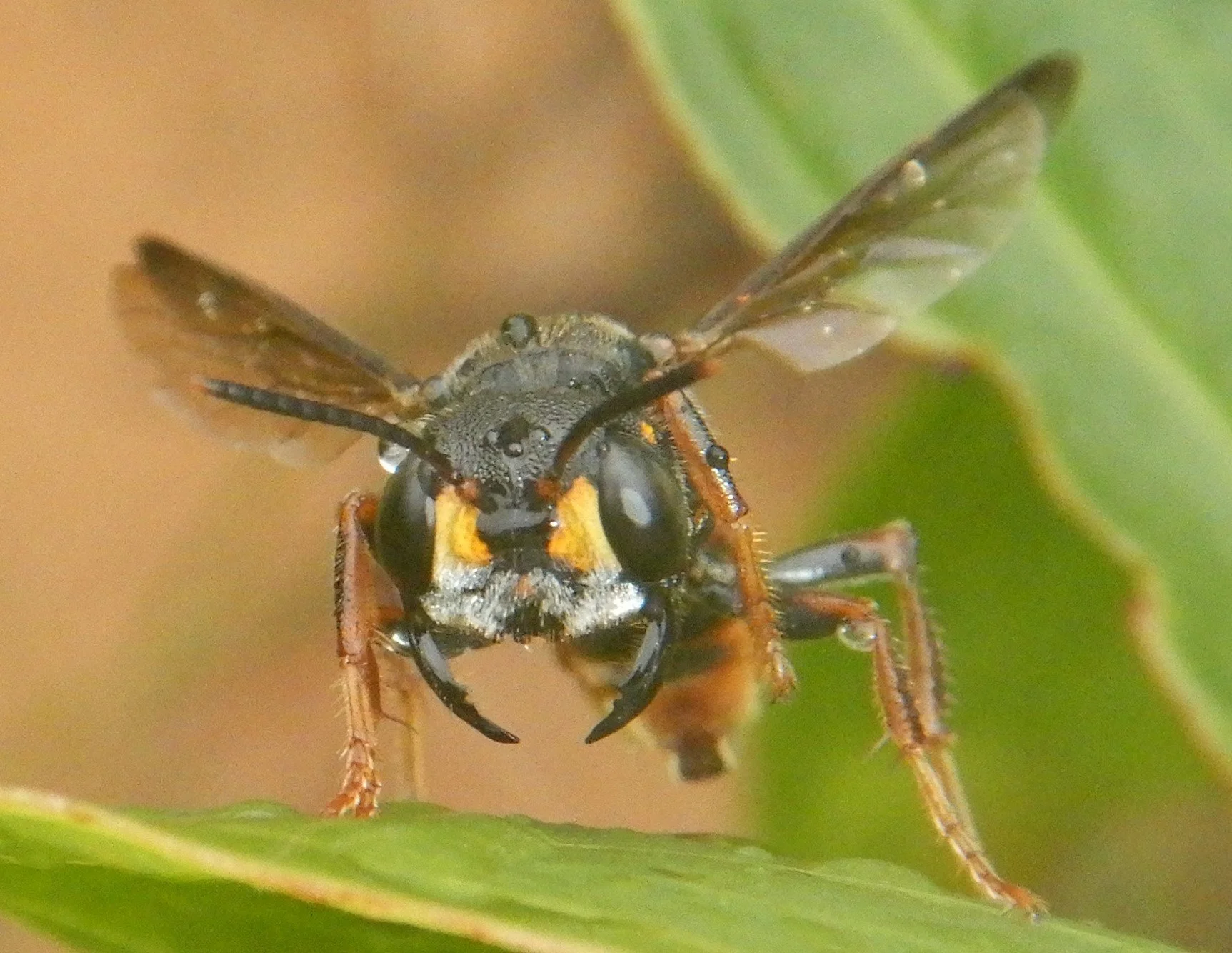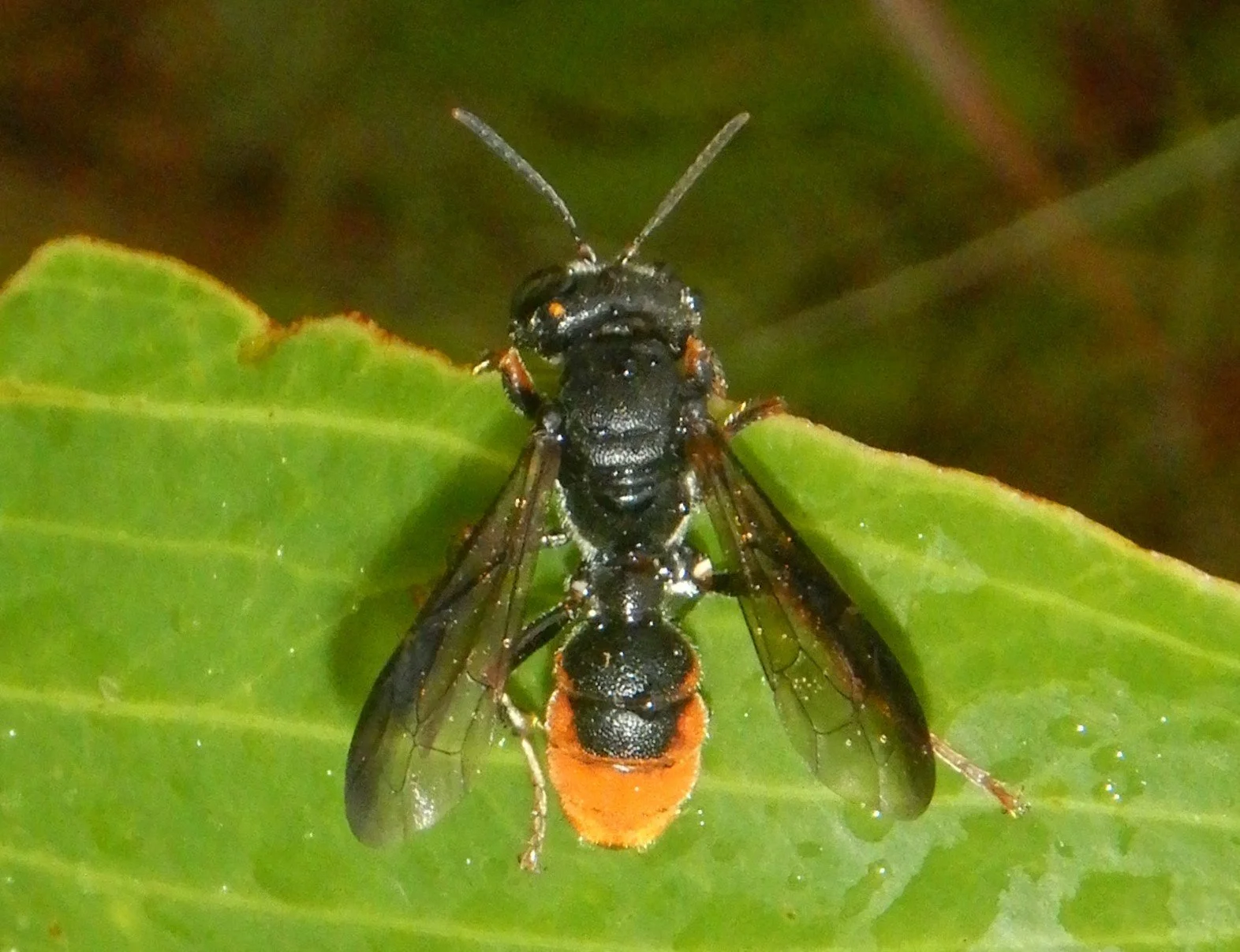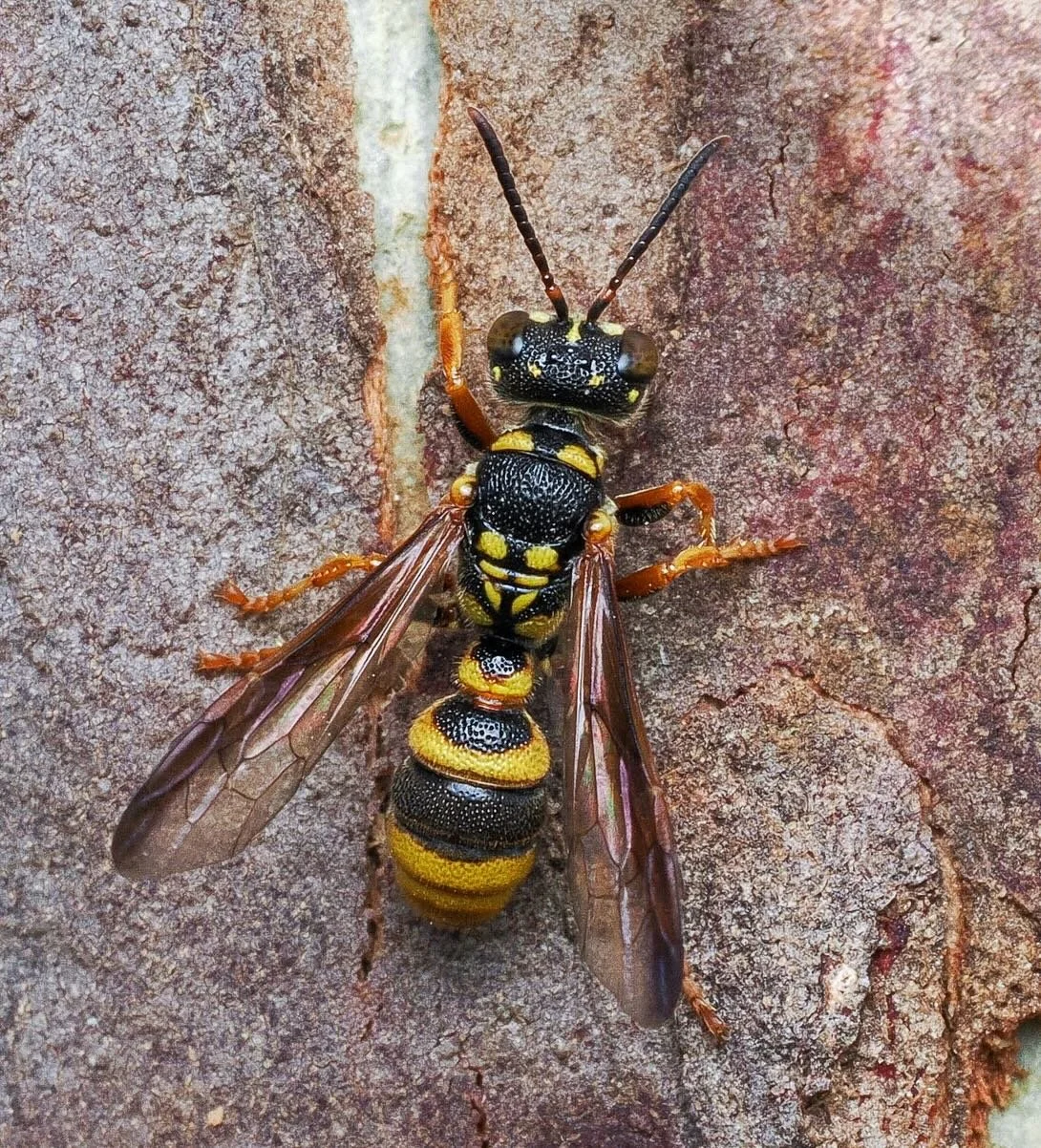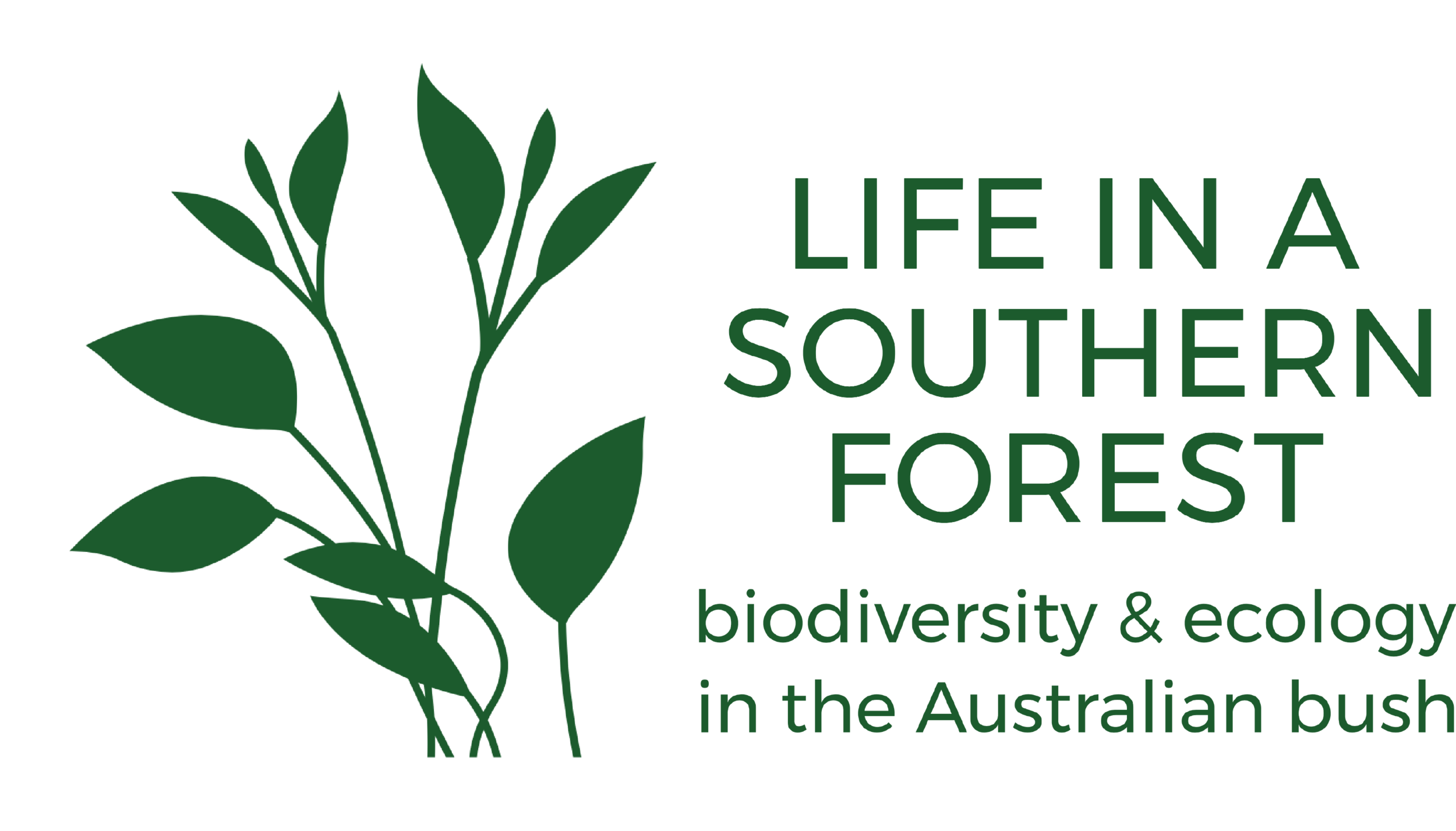
C. goddardi
The female of this species has a particularly broad head, the eyes divergent below.
The clypeus has a subrecumbent lamina, but it is “broadly incomplete” medially, with the sides curved “mesad and upward”. Viewed from above (or indeed head on, as here), it looks to have a pair of small teeth projecting from the apex of the lamina.
https://inaturalist.ala.org.au/observations/321974098
(image courtesy Scott Gavins)

C. froggatti
The largest of the Australian Cerceris.
- black mandibles & black-brown clypeus
- no clypeal lamella, but there is a pair of tubercles in the centre of the median lobe (not visible here through dense silvery pubescence)
- eyes strongly divergent below
https://inaturalist.ala.org.au/observations/103879235
(image courtesy Donna Maree Tomkinson)

C. froggatti
This species is reasonably common but with an apparently limited range: central NSW through to just north of the Tropic of Capricorn, QLD.
Note:
- the distinctively marked metasoma, including: petiole black; T2-3 black with orange markings latero apically, those on T3 more broad; T4-6 orange
-forewings wings darkened along costal (leading) edge
- petiole particularly wide, & convex both laterally and dorsally
https://inaturalist.ala.org.au/observations/103879235
(image courtesy Donna Maree Tomkinson)

C. multiguttata
- diagnostic colour pattern on the polished enclosure (ie the dorsal triangle) of the propodeum … it is yellow laterally, black medially and basally
- metasoma colour pattern is also distinctive: the petiole yellow but black on basal third; T2 yellow but with a large, mediobasal black spot; T3 black; T4-5 yellow
https://inaturalist.ala.org.au/observations/246741066
(image courtesy Ged Tranter)




